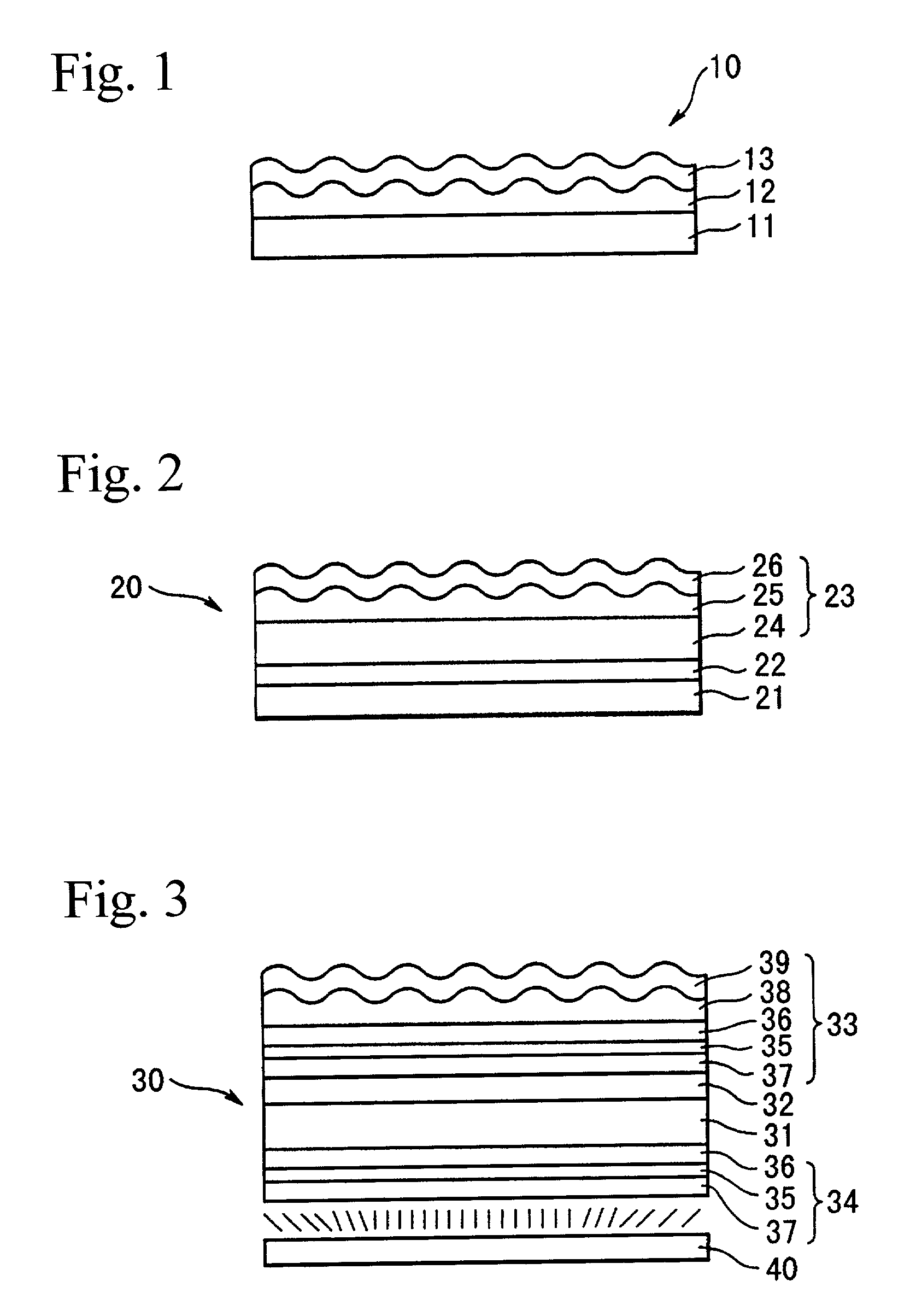Anti-static anti-reflective film
- Summary
- Abstract
- Description
- Claims
- Application Information
AI Technical Summary
Benefits of technology
Problems solved by technology
Method used
Image
Examples
example 1
[0056] 6 functional acrylate: dipentaerythritol hexaacrylate (trade name: DPE-6A, produced by Shin-Nakamura Chemistry Co., Ltd.) containing 5% cleavaging-type photoinitiator (trade name: Dalocure 1173, produced by Ciba Specialty Chemicals K.K.) was coated on one surface of triacetyl cellulose film (trade name: Fuji Tack UVD-80, produced by Fuji Film Corporation) having a thickness of 80 .mu.m, so as to have a layer thickness of 3 .mu.m. Subsequently, the film was irradiated with UV radiation to cure the coating film, under the conditions of output powder: 120 W / cm, radiation distance: 10 cm, treatment speed: 5 m / min, using one converging type high-pressure mercury lamp. Therefore, a high refractive index hard coat layer was formed.
[0057] Next, 2.40 g oxalic acid dihydrate was dissolved to 14.16 g ethanol in a 100 ml three-necked flask, and they were refluxed in an oil bath. A mixture of 2.20 g (10.7 mmol) of tetraethoxysilane, 0.62 g (1.4 mmol) of 1H,1H,2H,2H-tetrahydro perfluorooct...
example 2
[0058] An anti-static anti-reflective film of Example 2 was produced in the same manner as in Example 1, except that the 0.62 g (1.4 mmol) of 1H,1H,2H,2H-tetrahydro perfluorooctyl triethoxysilane in Example 1 was changed to 0.62 g (2.84 mmol) of 1,1,1-tetrahydro perfluoropropyl triethoxysilane.
example 3
[0059] An anti-static anti-reflective film of Example 3 was produced in the same manner as in Example 1, except that in Example 1, the 2.20 g (10.7 mmol) of tetraethoxysilane was changed to 3.00 g (14.4 mmol), the 0.62 g (1.4 mmol) of 1H,1H,2H,2H-tetrahydro perfluorooctyl triethoxysilane was changed to 0.24 g (0.4 mmol), and the 0.62 g (2.4 mmol) of N-trimethoxysilylpropyl-N,N,N-trimethylammonium chloride was changed to 0.62 g (1.2 mmol) of octadecyl dimethyl [3-(trimethoxysilyl) propyl] ammonium chloride.
PUM
| Property | Measurement | Unit |
|---|---|---|
| Percent by mass | aaaaa | aaaaa |
| Transparency | aaaaa | aaaaa |
Abstract
Description
Claims
Application Information
 Login to View More
Login to View More - R&D
- Intellectual Property
- Life Sciences
- Materials
- Tech Scout
- Unparalleled Data Quality
- Higher Quality Content
- 60% Fewer Hallucinations
Browse by: Latest US Patents, China's latest patents, Technical Efficacy Thesaurus, Application Domain, Technology Topic, Popular Technical Reports.
© 2025 PatSnap. All rights reserved.Legal|Privacy policy|Modern Slavery Act Transparency Statement|Sitemap|About US| Contact US: help@patsnap.com

